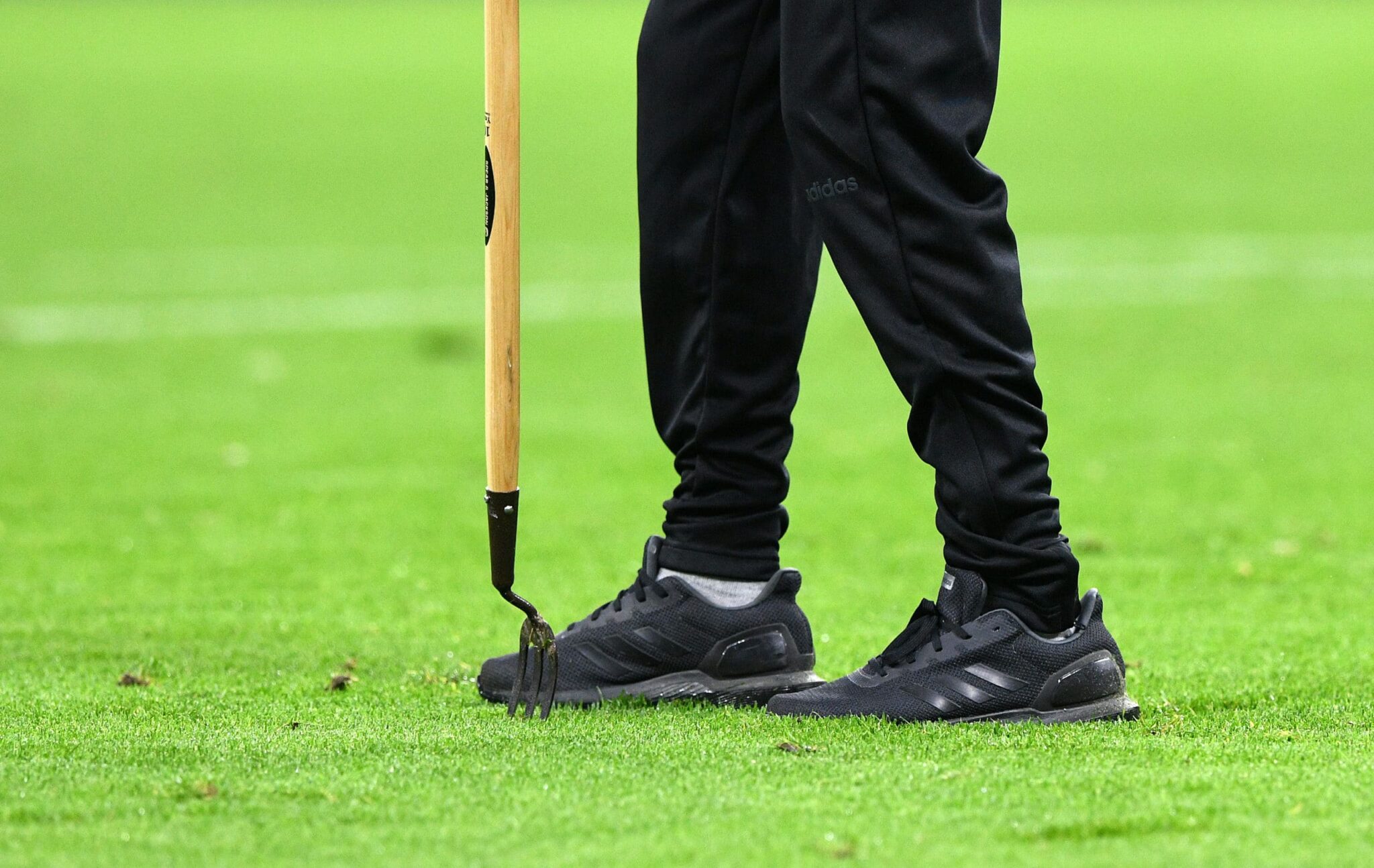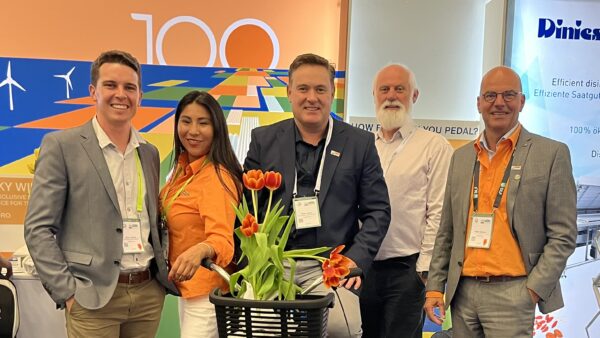UEFA shares its advice and top three objectives for high quality grass fields
The UEFA Euro 2020 soccer tournament will take place in summer 2021, after it was postponed last year because of the coronavirus pandemic. The tournament, still going by the name of UEFA Euro 2020, will begin on the 11th of June and finish a month later.
Twenty-four nations will compete against each other, and the matches will take place in 12 stadiums across Europe. Portugal will seek to defend its crown but will face stiff competition from a wide-open field, including World Cup champions, France.
The tournament is organized by UEFA, the Union of European Football Associations. They are the governing body of European football, and the umbrella organization of its 55 member associations. UEFA seeks to support its members associations, and their stadiums, for example with the ‘UEFA Guide to Quality Stadiums’, or with the ‘UEFA Pitch Quality Guidelines – Natural turf pitch management’. European Seed sat down with UEFA for their take on how best to maintain a good grass pitch.

European Seed (ES): From the seed sector side, we’re always interested in knowing which species of grass are best for a good soccer pitch. Which grass species does UEFA prefer in its fields?
UEFA: We do not recommend a particular type of grass seed, due to several different factors. We use independent agronomy experts who can make recommendations, based on best practices, which can include a particular species of grass. However, this is always a suggestion and done on a case-by-case basis, as we host matches across the continent of Europe, across 55 member associations. For example, due to climatic reasons, the type of grass seed used in Cyprus, may vary greatly from the type that is used in Norway.
ES: Which characteristics of the grass pitch are most important for a good playing experience?
UEFA: Through its pitch support programmes, UEFA has three main objectives when it comes to the quality of a pitch:
- Player safety: Surfaces should be safe for players to perform on and not contribute to any injury when in use.
- To contribute to the quality of the game that can be played, the pitch should not have a negative impact on the performance of the teams in terms of the interaction between the player and the surface, and the ball and the surface.
- The aesthetics of the pitch: This is an important aspect as the playing surface is a representation of the competitions. Clubs and national teams are playing in front of television audiences of millions of people and it is important that the pitch is in the best possible condition, from an aesthetical point of view as well.
ES: What kind of challenges do stadiums face while trying to maintain a good grass pitch?
UEFA: Modern stadia are increasingly becoming multi-use facilities. The business models have been developed to generate income all year round, through the staging of concerts and other non-football activities. This can place a great strain on the pitch and often leads to significant damage, even when the appropriate measures have been put into place to minimise any potential effects. The stadium industry has begun to recognise this issue with many venues developing pitches that can be moved outside of the stadium bowl to stage such events. The Arena AufSchalke (Gelsenkirchen, Germany), the St. Petersburg Stadium and the Tottenham Hotspur stadium are all examples of this.
The design of stadiums has also evolved over recent years, with many no longer having running tracks. The trend has been for the tribunes to be steeper and closer to the pitch itself to improve sight lines and give the spectators a better experience. However, the consequence of this can sometimes lead to large areas of the pitch having little access to direct sunlight, which can hamper the recovery of the playing surface at certain points during the season. Despite the development of various technologies, such as artificial pitch lights, that help the grounds team with their maintenance, this is still proving to be a challenge.

ES: How can grass seed companies help in providing a better grass pitch?
UEFA: We do not deal with grass seed companies directly. As mentioned above, the key for UEFA is that the venues are selecting grass species that are suitable to their particular climate, stadium environment and level of use.
ES: How important is a focus towards sustainability, such as less fertilizer or pesticide use?
UEFA: Sustainability is increasingly important in every industry and the stadium and pitch sector is no exception. To share the best practices in sustainable pitch management, UEFA has added an appendix to its Pitch Quality Guidelines document that explains the latest best practice in sustainable pitch management.
These guidelines cover elements such as stadium design and construction, natural sunlight levels, airflow, water and power provision, water management, fertiliser and nutrient management and disease and pest management. One challenge that UEFA faces when attempting to issue advice is the differing legislation and availability of certain products in different countries inside and outside of the European Union.
ES: If you could make a wish list for better grass varieties, what would be in the top 3?
UEFA: As stated in our answers above, we do not have a specific preference, just the one that delivers the three priorities mentioned at the second question (player safety; quality of the game of football that can be played; and the aesthetics of the pitch) and meets the specific needs of the venues.

UEFA Pitch Quality Guidelines – Natural turf pitch management, 2018 edition
Paragraph 3.8 – Turfgrass selection
A stadium’s choice of turfgrass will depend on its location and climate. This is another highly specialist area, on which these guidelines can provide only very basic instruction.
There are two main types of turfgrass – cool-season turfgrass and warm-season turfgrass. The two types vary considerably in their basic biology and climate adaptation, and both can be found on pitches in various locations across countries that host UEFA matches:
- Cool-season turfgrass species are adapted to cooler regions. Species used regularly on football pitches include perennial ryegrass (Lolium perenne), smooth-stalked meadow-grass/Kentucky bluegrass (Poa pratensis) and tall fescue (Festuca arundinacea).
- Warm-season turfgrass species are adapted to tropical areas. Common species include bermudagrass (Cynodon species), zoysia species (mainly Zoysia japonica and Zoysia matrella) and seashore paspalum (Paspalum vaginatum).

The species of turfgrass selected will depend on factors such as tolerance to heat or cold, drought resistance and disease resistance. Extensive turfgrass breeding work has been carried out to improve the wear tolerance and local adaptation of individual cultivars (varieties) of each species.
Turfgrass selection is particularly tricky in those parts of the world that experience a relatively wide range of temperatures, in particular those countries with continental transition zone climates and some Mediterranean/dry summer subtropical climates. In such climate zones, cool-season grasses are poorly adapted to summer conditions, when high temperatures, water availability and possible salt accumulation may be significant issues. Conversely, warm-season grasses are intolerant of the colder winter conditions and tend to go brown and dormant. Consequently, it is often necessary to oversow warm-season turfgrass with a cool-season species before the onset of winter. Such transitioning represents the most challenging aspect of turf management.












